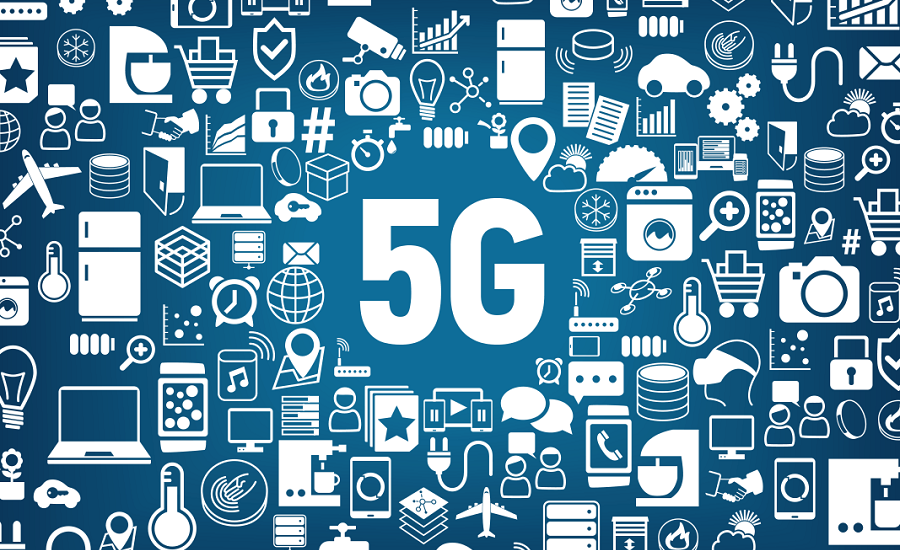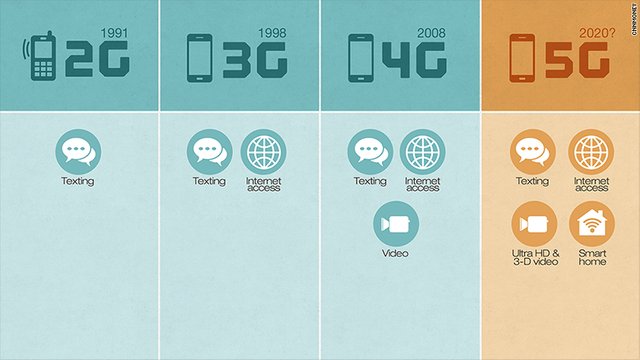What is 5G? The Basics

Everybody loves a quick and snappy internet connection, so it’s no surprise that every major telecom in the world is working to make it even faster. Smartphones, watches, homes, and cars are increasingly requiring stable internet connections. In order to get enough bandwidth for that precious wireless feed, 4G just won't cut it, so, we’re going to need an entirely new form of wireless signal—that’s where 5G comes in.
Similar to 4G and 3G before it, 5G is a wireless connection built specifically to keep up with the new devices that need a mobile internet connection. It’s not just your phone and your computer anymore, either. Home appliances, door locks, security cameras, cars, wearable's, dog collars, and so many other inert devices are beginning to connect to the web. Gartner(a leading research and advisory company) predicts that 20.8 billion devices will be connected to the Internet by 2020. By comparison, there are currently an estimated 6.4 billion connected devices in the world. That’s a lot more devices asking for a quick connection.
To make 5G and the future of wireless internet a little easier to understand, let's break down exactly what it is and how it will make your life better in the very near future.
What is 5G, and how fast will it be
The “G” in 5G stands for “generation.” Wireless phone technology technically started with 1G, and in the early 1990's, and it expanded to 2G when companies first started enabling people to send text messages between two cellular devices.
Eventually the world moved on to 3G, which gave people the ability to make phone calls, send text messages, and browse the internet. 4G enhanced many of the capabilities that that third generation technology had. People could browse the web, send text messages, and make phone calls—and they could even download and upload large video files without any issues.
Like every "next generation" wireless network technology, 5G will give your phone a speedier connection, about 10 times faster than 4G, industry experts expect. That's enough to stream 8K video or download a 3D movie in 30 seconds. (On 4G, it would take six minutes.)

The extra capacity will make service more reliable, allowing more gadgets to connect to the network at the same time. But 5G will power up more than only smartphones. Sensors, thermostats, cars, robots, and other new technology will all connect to 5G one day. Today's 4G networks don't have enough bandwidth for the vast amounts of data all those devices will transmit.
5G networks will also reduce to virtually zero the lag time between devices and the servers they communicate with. For driver-less cars, that means uninterrupted communication between a car and other vehicles, data centers and outside sensors.
How does it work?
5G takes advantage of a lot of technology in an attempt to achieve these fast speeds. There isn’t just one innovation at play. The IEEE Spectrum magazine does a good job of explaining a lot of the technical details in more depth, but here’s a quick summary.

The new standard will use a whole new band of radio spectrum from 4G. 5G will take advantage of “millimeter waves”, broadcast at frequencies between 30-100 GHz and above versus the bands below 6 GHz that were used in the past. These were previously only used for communication between satellites and radar systems. But millimeter waves can’t easily travel through buildings or other solid objects, so 5G will also take advantage of “small cells”—smaller miniature based stations that can be placed about every 250 meters throughout dense urban areas. These would provide much better coverage in such locations.
These base stations also use “massive MIMO”. MIMO stands for “multiple-input multiple-output.” You might even have a home wireless router with MIMO technology, which means it has multiple antennas it can use to talk to multiple different wireless devices at once rather than quickly switching between them. Massive MIMO will use dozens of antennas on a single base station. They will also take advantage of beamforming to better direct those signals, directing the wireless signal in a beam pointing at the device and reducing interference for other devices.

5G base stations will also run at full duplex, which means they can transmit and receive at the same time, on the same frequency. Today, they have to switch between transmitting and listening modes, slowing things down. That’s just a glimpse to some of the technology being incorporated to make 5G so fast.
When will 5G be available?
The wireless industry expects 5G networks to launch in 2020.

In January, 5G cleared a significant hurdle when 3GPP, an international wireless consortium, approved a technology standard for next-generation networks. Next year, the United Nations' International Telecommunications Union is expected to review 3GPP's standard. After that, wireless companies can begin buying and selling 5G equipment with the assurance that it will all work together.
Meanwhile, Verizon and AT&T have been making waves testing 5G networks. AT&T says it will start to roll out its 5G network as early as this year, though virtually no one will be able to use it until 5G-compatible devices land on store shelves. That's unlikely to happen before 2020.
But it will be well worth the wait. If there’s anything that everyone can agree on, it’s that speedy internet is a necessity in this day and age. And the importance of a quick connection is only going to increase. If we’re going to realize a vision of the future with billions of connected devices, then blazing fast internet is going to become a basic necessity and 5G will help us get there.
Your Post Has Been Featured on @Resteemable!
Feature any Steemit post using resteemit.com!
How It Works:
1. Take Any Steemit URL
2. Erase
https://3. Type
reGet Featured Instantly � Featured Posts are voted every 2.4hrs
Join the Curation Team Here | Vote Resteemable for Witness
This post has received a 0.51 % upvote from @drotto thanks to: @braven77.